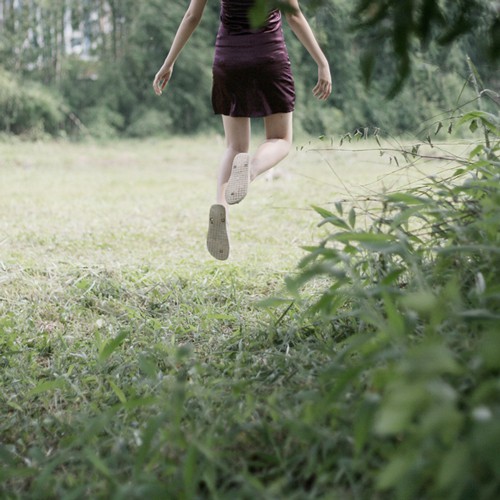Share
Train of Thought: Kaye, Laforet, Photoshop and Mcluhan.
Russell Kaye sent this image over to me on Friday after my floaters post, and I was flummoxed by it. That is to say, it looked Photoshopped, but I ...

post, and I was flummoxed by it. That is to say, it looked Photoshopped, but I couldn’t understand quite how. I wrote Russell
back, and it turns out the image was made for Outside Magazine “at the
turn of the century”; it was shot straight on negative film, and the
manipulation was done in the darkroom. Russell appropriated the
technique from Tom Baril, who was Robert Mapplethorpe’s gifted printer;
he regularly diffused Mapplethorpe’s portraits with inventive
techniques like putting pantyhose over the enlarger lens.
It’s funny, but this kind of thing makes me feel all fuzzy and
nostalgic. I feel a greater connection to this image knowing it was
created in the darkroom… it seems somehow historical. Sort of
in the same way that Vincent Laforet’s tilt-shift photographs get me;
when I first saw the aerial sports imagery in Play a few years ago it
was thrilling.

photo by Vincent Laforet
I’m a nostalgic person in general, so I think I am
reacting to my own school room connections to the darkroom and the view
camera. I mean, does it matter how an image comes to look how
it looks? Maybe I just miss the craft, the physicality of camera and darkroom tinkering. Certainly there is more manipulation than ever in imagery.
Russell has since stopped using so much softness because it “became way
too trendy,” even though now he’s shooting 4×5 and using Photoshop and Epson as his darkroom.
I think Russell is nostalgic as well. He says he “loves it that the year
2000 was the old days.”
All this came up in my brain this morning again when I saw an article
in Folio saying Glamour editor and ASME (American Society of Magazine
Editors)
president Cindi Leive is thinking about facilitating a panel about
digitally altered magazine imagery. This comes after the Periodical
Publishers Association–the U.K.’s version of ASME–announced its plan to hold discussions
about banning digitally altered images of celebrities altogether. Leive
is quoted saying “Readers should never be misled about what they’re
looking at.”
Wow, that’s quite a statement. I mean, this is a very slippery slope.
Because Everything is manipulated. Does it matter? What IS imagery now?
I don’t think a photograph is considered a document of truth the way it
used to be, and it hasn’t been for some time. People have been altering
images forever. I mean, it’s part of the game. This struck me recently
when I went to see an exhibit entitled “The Art of the American
Snapshot” at the National Gallery in DC. There were so many trick shots using
forced perspective, and it seemed a carefree example of the inclination to make things seem different from reality in a photograph.
Because isn’t that the whole point? Creating an image of one’s own,
particular view of the world?

photographer unknown, gelatin silver print, 1920s.
Marshall Mcluhan, help us out here. I dug old Marshall up this morning
from the college stacks, and it’s pretty amazing how resonant his words from a
1964 essay entitled Understanding Media still are:
“Every culture and every age has its favorite model of perception and knowledge that it is inclined to prescribe for everybody and everything […] At any rate, in experimental art, men are given the exact
specifications of coming violence to their own psyches from their own
counter-irritants or technology. For those parts of ourselves that we
thrust out in the form of new invention are attempts to counter or
neutralize collective pressures and irritations. But the
counter-irritant usually proves a greater plague than the initial
irritant, like a drug habit. And it is here that the artist can show us
how to ‘ride with the punch,’ instead of ‘taking it on the chin.’ It can only
be repeated that human history has a record of ‘taking it on the chin.’
I’m interested to see how these Photoshop panels shape up. I don’t want to take anything on the chin.
* Within minutes of posting this, two friends reminded me of Errol Morris’ great series of essays in the Times about Roger Fenton’s war photographs, which were manipulated before he took them, and what the repercussions of that are. Check it out, it’s a good read.



